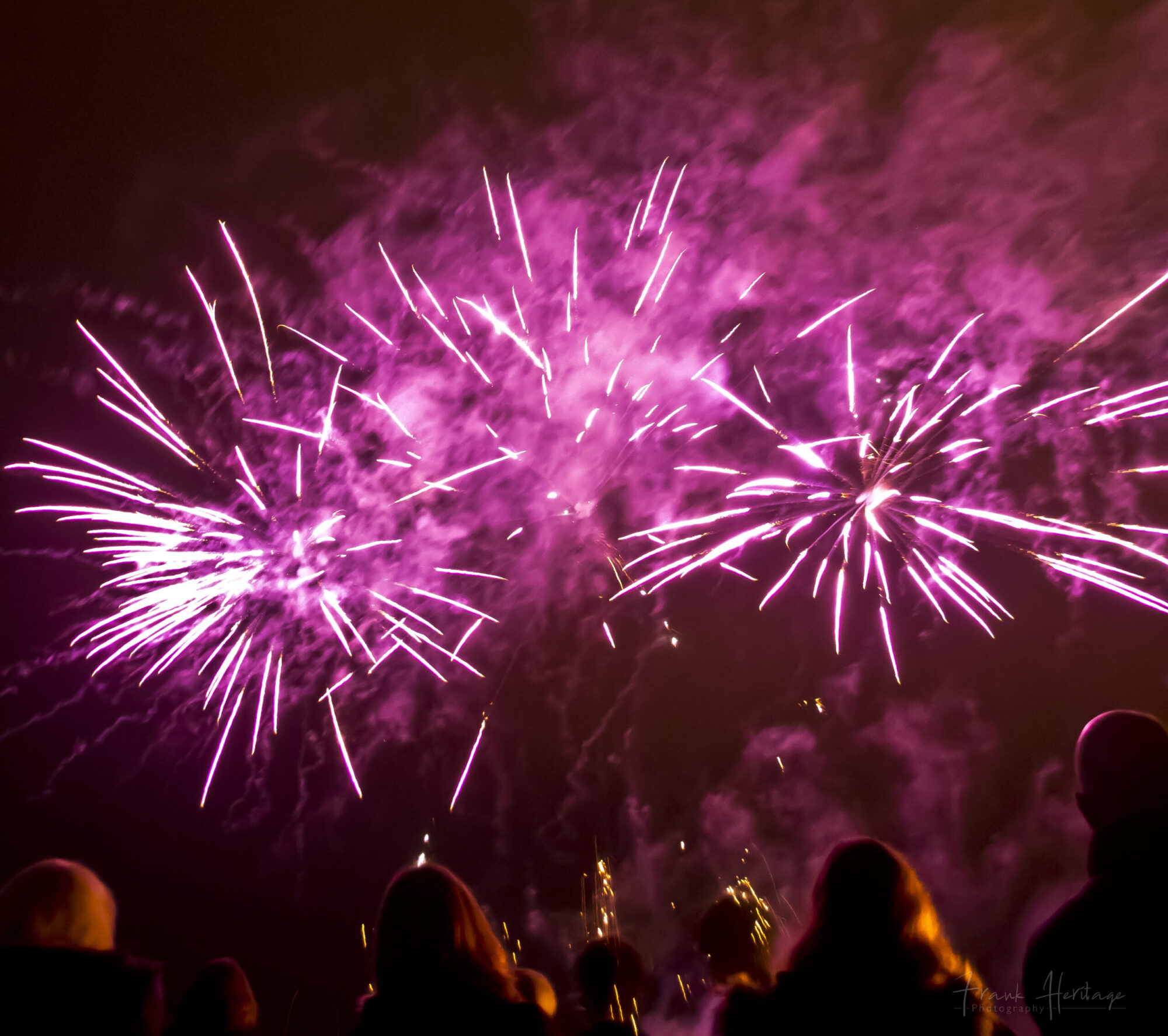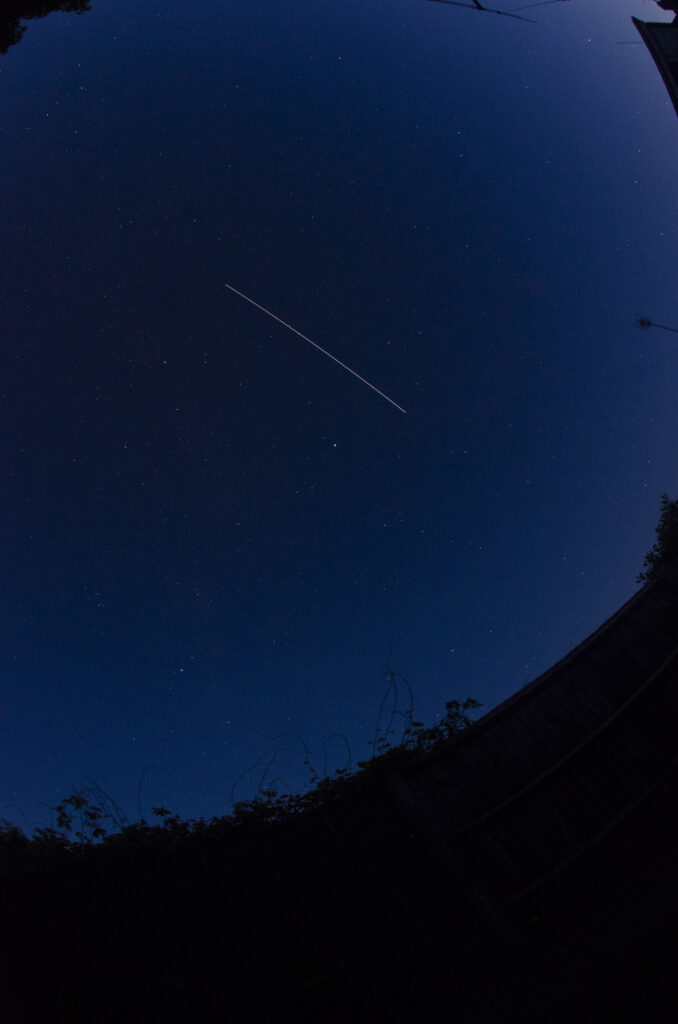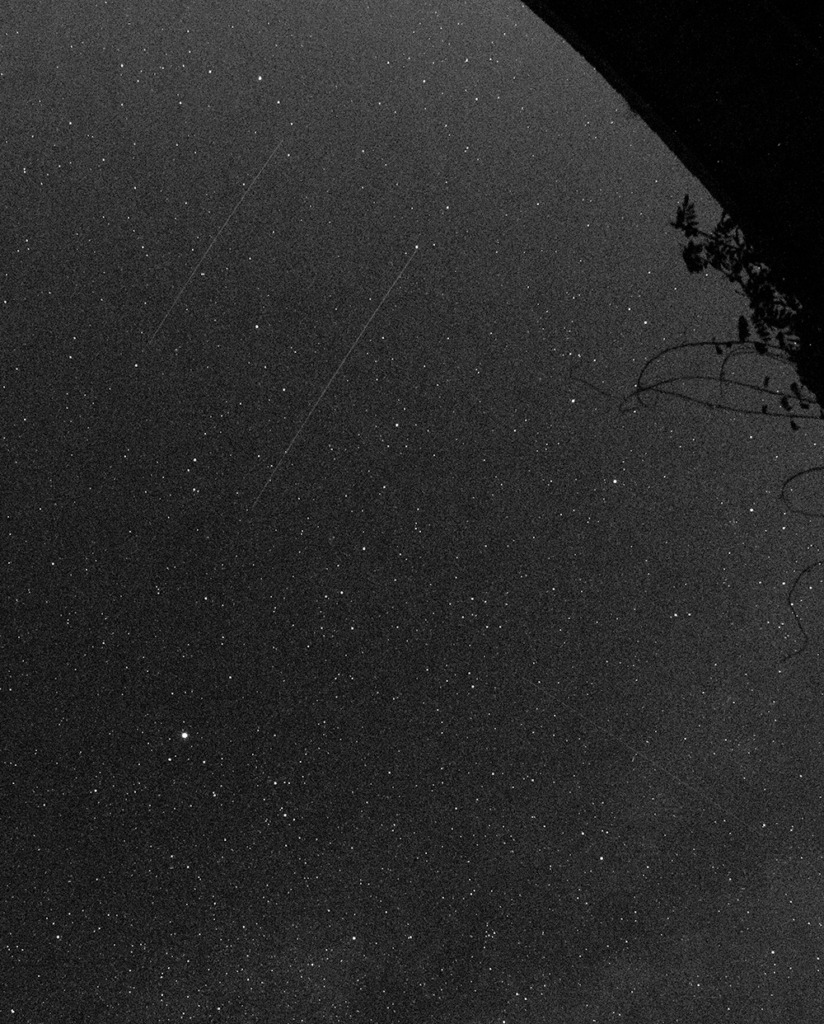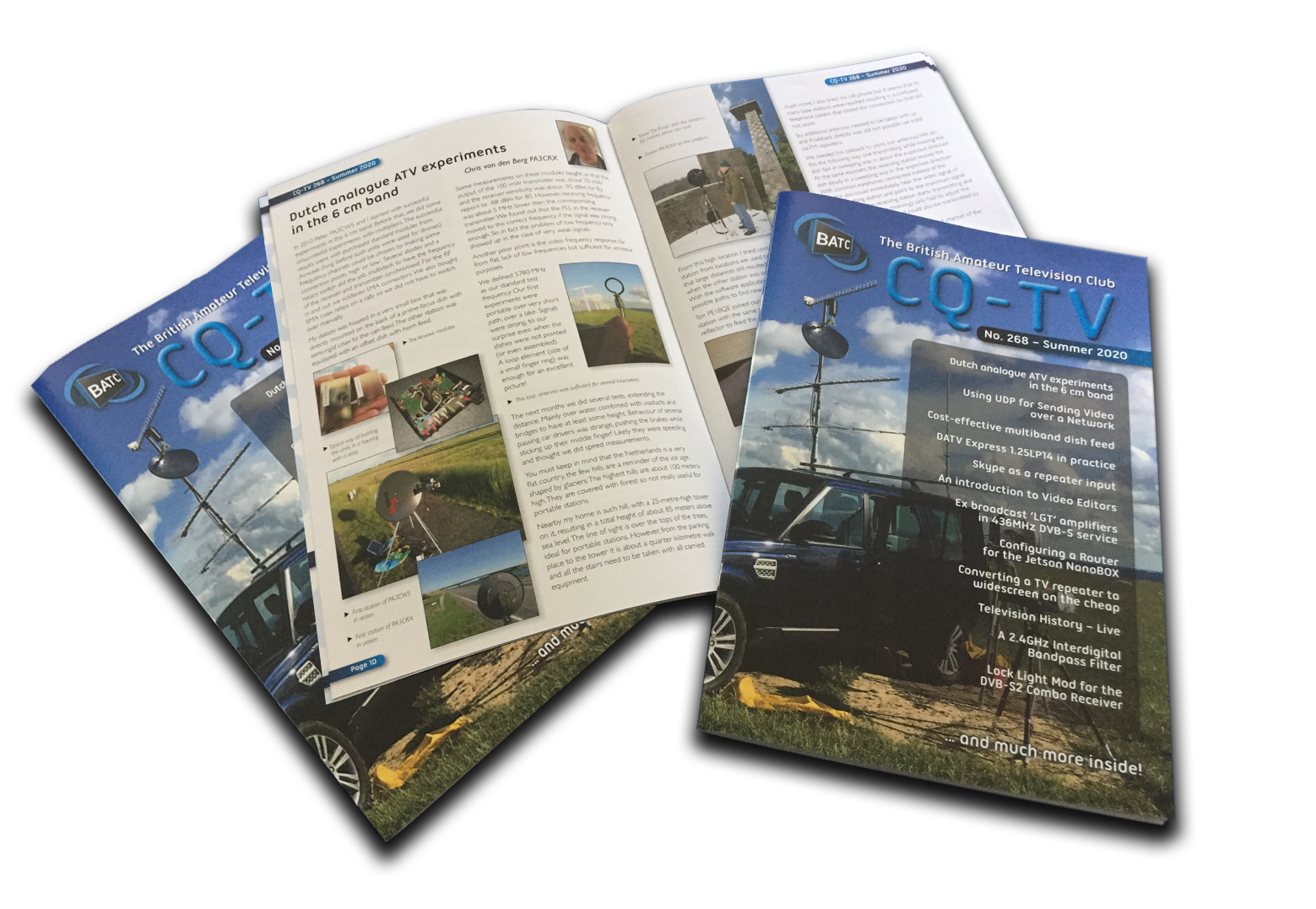Getting my weather satellite receiver back on air…

It’s been a while since I had my VHF weather satellite receiver on, and pending a change to my VHF satellite aerials, I thought I’d fire up the receiver and see how things were. A few things have changed here.
I’ve got a new (to me) NESDR SMArt software defined receiver (SDR) with a chinese 32db low noise amplifier (LNA). I lost my turnstile aerial in a storm a while back, and I have occasionally received the satellite images on my 145MHz vertical collinear – but the results were marginal. Since I have a 9 element beam for 145MHz on a azumith/elevation rotator I thought why not make use of it?
The other big change is the software. As I’m Mac based, I’ve always used WXtoIMG to receive and decode the weather images – however there’s a relatively new piece of software called SatDump – available for Windows, Mac, Linux, Android, Pi… and in my opinion, it’s a game changer. Satdump schedules the satellites, controls the receiver and the rotator, receives the signal, and decodes it! And it does it for all the popular satellites, both on VHF (137MHz) and on 1.6GHz. I can’t currently receive the HRPT hi-resolution images at 1.6GHz, but hopefully that’s about to change.
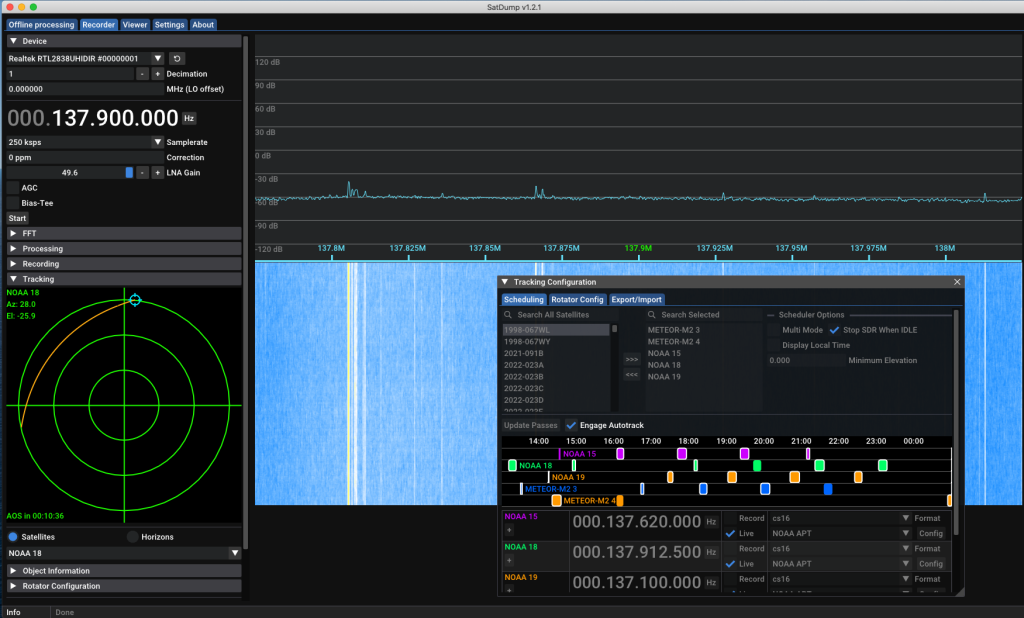
Visit to Auschwitz-Birkenau

During a recent holiday to Krakow in Poland, we took the opportunity to visit the Auschwitz-Birkenau museum in Oświęcim. We’d seen films like ‘Schindler’s List’, ‘The Zone of Interest’ and the recent mini-series ‘The Tatooist of Auschwitz’ but nothing really prepares you for witnessing the location in real life.
I tried to limit my photographs to essential images, out of respect for those that lost their lives in these camps – and once I saw the photos I felt they would benefit from the black and white treatment.
Perseid Meteor Shower 2022
Over the nights of the 9-13 Aug 2022 I set up my camera as a timelapse to capture the Perseid meteors (if I could!). With a drought and very warm spell currently affecting the UK I was assured of some clear nights. However, it was a full moon on the 11th August!
Despite a lot of planes and satellites, I did manage to capture a few shooting stars! This is the footage from the night of the 12/13th.
Details: Nikon D5300 DSLR; ISO 800; f2.8; 30 second exposures, every 30 seconds. North is to the bottom of the image. Starlink satellites pass from left to right (west to east) with the polar orbitting satellites passing north and south.
Get outside, and just look up…
As we head towards August, the nights start to get longer again and it’s darker at a reasonable hour. Take a few minutes before bed to pop outside and just look up – you’ll be amazed at how much you can see, without the aid of any expensive equipment.
Allow your eyes to become accustomed to the dark, and as you do, more and more stars will become visible. If you have dark enough skies, you may even see the Milky Way – millions of stars that help to form our own galaxy.
So what can you see?
Apart from the millions of stars there are plenty more objects to be seen! But how do you tell what you are looking at?
If it’s moving and it’s flashing – it’s an aeroplane or helicopter…
If it’s moving and the light is constant, it’s probably a satellite – including possibly the International Space Station…
If it’s fast moving, and just a brief flash – it’s probably a meteor , a shooting star. However some satellites tumble in their orbit, and they can occasionally appear to give a very brief bright flash. Often this will repeat further along its orbit – definitely not a meteor then!
Let’s look at some of these in more detail…
Stars
Amongst the millions of stars out there, some are more prominent than others – either through their brightness eg: Vega, Deneb and Altair (an asterism known as the Summer Triangle) or through the constellations they make eg Leo, Cassiopeia, Cygnus.
A good app on your phone or tablet (Sky Safari, Night Sky, Sky Guide etc) will let you explore the night sky and help you identify the constellations you’re looking at.
Meteors
The biggest of the meteor showers occurs in August – the Perseid shower. This takes place between the 17 July and 24 August, and meteors can be seen any time after sunset, although the peak is between midnight and 5am. For all the details about this meteor shower, visit this website.
Satellites
Satellites appear as small pinpoints of light, moving across the sky, usually north/south or from west to east. The N/S satellites are ‘polar orbiting’ meaning their orbit takes them over the top of the poles – this means they’ll pass over a country in the morning and again approximately 12 hours later. The first time if they’re travelling from the south to the north, then in the afternoon they will be travelling from the north to the south.
The ISS and the satellites in the StarLink series all travel from the west to the east. Often you can see several of the StarLink satellites passing in formation. For more detail about the StarLink satellites, be sure to read my post on StarLink.
Satellites can only be seen because they reflect sunlight off the solar panels and body of the satellite. Often they will appear to fade out overhead – this is as the satellite passes into the shadow of the earth and out of the sunlight.
Photographing the night sky
If you’d like to try photographing the night sky be sure to read my tips here. The key is patience, a tripod, and a lot of luck!
Sky Glow
Locally, we are fortunate that the streetlights are turned off at 1am (mainly to save the council money!) – this has the effect of reducing. the amount of glow from local lights. There is currently a proposal to build a very large 24/7/365 warehouse operation, less than a mile from me. If this goes ahead, the skyglow produced will destroy any opportunity I will have for astronomy. I will be objecting to the development and if you see any similar development near you – please object!
A little night timelapse…
Double click the video to play it full screen.
The BATC quarterly magazine – CQ-TV
 I’ve been a member of the British Amateur Television Club for over six years, and to be honest, my knowledge of the technical side of transmitting a television signal could be written on a postage stamp.
I’ve been a member of the British Amateur Television Club for over six years, and to be honest, my knowledge of the technical side of transmitting a television signal could be written on a postage stamp.
However for over five years now, I’ve been the Editor of the BATC quarterly magazine – CQ-TV. I say my official title is Editor… to be honest I’m really just the paste-up artist putting the content on the pages in a reasonable style! However, it’s certainly something I know a little about and I really enjoy laying out the pages.
The magazine regularly runs to 44 pages, now in full colour throughout, thanks to modern digital printing techniques. Printing? Yes, despite being received by the 1,000 BATC members as a digital download (PDF), there are still almost 400 members that also like to receive it as a printed, physical magazine.
This does lead to a few considerations having to be made in the design of the magazine. Everything has to be CMYK, you can’t include animation or video, unless it’s a link to online content, you have to conform to the ‘rule of 4’ for the number of pages, and the format has to be portrait – A4 considered to be the most economic in terms of paper and postage. Considering it’s mailed to 30 overseas members, the weight of the magazine is a critical factor, and this limits the extent each edition to 44 pages in order to meet the postage limits, whilst retaining a reasonable stock for the text pages.
The biggest problem with a 44 page quarterly magazine, is the content required to fill these pages. Whilst I have an interest in video production, there are only so many pages I can write on the topic – and the focus of the BATC is really on the technical transmission side of the hobby. So I depend on technical authors to keep me supplied with content.
Recently the BATC held their annual conference – CAT20. Usually a weekend event consisting of lectures on topics of interest; workshops to diagnose problems with the delegates projects; a ‘bring and buy’ area; and the opportunity to spend the weekend discussing ideas with like-minded souls. This year however the conference had to be an online affair – so without the chance to chat to individuals and persuade them to write an article for the magazine, I decided it needed a video promo, to be played between the lecture sessions to try and persuade folks to write something. Did it work? I don’t know yet, but I hope so. Here’s the promo for your enjoyment!
